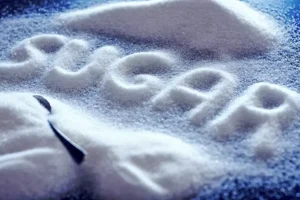
The pharmacokinetics of volatile gas clearance from the blood via the lungs was more recently investigated for other volatile liquid compounds (sevoflurane9 and isoflurane10) and the gas carbon monoxide (CO)11, 12. Pharmacokinetic considerations would support the same being the case for the lung clearance of all volatile hydrocarbons. We used breathalyzer ethanol measures as a surrogate for blood ethanol levels for pharmacokinetic measures. Our aim was to study the kinetics of elimination rather than identify exact blood ethanol levels. The main finding of this study is that IH induced an exponential clearance of ethanol with a short t½ increasing the absolute rate of clearance by at least a factor of 3, even at the low initial intoxication levels of this experiment.
- In a simulated driving test, for example, bus drivers with a blood alcohol concentration of 10.9 mmol/l (50 mg/100 ml) thought they could drive through obstacles that were too narrow for their vehicles.
- At 17.4 mmol/l (80 mg/100 ml)—the current legal limit for driving in the United Kingdom—the risk of a road traffic incident more than doubles, and at 34.7 mmol/l (160 mg/100 ml), it increases more than 10-fold.
- The main finding of this study is that IH induced an exponential clearance of ethanol with a short t½ increasing the absolute rate of clearance by at least a factor of 3, even at the low initial intoxication levels of this experiment.
- Nursing mothers should be aware that the concentration of alcohol in breast milk is about 10% higher than in the blood, because of the high water content of the milk.
- Procedures followed approval of the protocols by the research ethics board at the University Health Network and were carried out in accordance with relevant guidelines and regulations, including obtaining informed consent from all subjects.
How is alcohol metabolized by the liver?
The moment acetaldehyde is produced; it must be degraded to protect the liver cells. The enzyme that will carry this type of degradation reaction is acetaldehyde dehydrogenase (ALDH). Acetaldehyde dehydrogenase converts acetaldehyde into acetate, a non-toxic molecule. The lungs and kidneys will excrete about 2% to 10% of this circulatory ethanol.
Human Nutrition: 2020 Edition
It can also be eliminated through the breath, since the bloodstream carries it to the lungs. This is why a breathalyzer can effectively measure your blood alcohol level (breath alcohol testing device). Alcohol is a volatile (flammable) organic substance and can be converted to a gas.

Isocapnic hyperpnea (IH) protocol
Ethanol diffuses from the capillaries (with the concentration gradient) into the nearby hepatic cells (the major cells of the liver).In the hepatic (liver) cells, some of the ethanol is converted, or detoxified by enzymes to inactive products. This process is called metabolism, and the products are called metabolites. Alcohol is absorbed very quickly by the blood and spreads easily to all the organs. They don’t have to be broken down by digestive enzymes to get into the blood, and they dissolve easily in water and fat, both of which are prime components of the human body. Alcohol (ethanol) is a drug, and health professionals should know something of its physiological and pathological effects and its handling by the body.
Alcohol Metabolism
Alcohol is distributed throughout the water in the body, so that most tissues—such as the heart, brain, and muscles—are exposed to the same concentration of alcohol as the blood. The exception is the liver, where exposure is greater because blood is received direct from the stomach and small bowel via the portal vein. Alcohol diffuses rather slowly, except into organs with a rich blood supply such as the brain and lungs.lungs.

- From the practical bedside perspective, applying IH to heavily intoxicated patients who require critical care that includes endotracheal intubation, would simply requires manual ventilation with a self-inflating bag.
- (A) Schematic of the ClearMateTM passive non- rebreathing, hyperoxic, IH circuit.
- Firstly, normal metabolism increases, as shown by high blood concentrations of acetate.
- A second period of IH was then performed for 20 min, with breathalyzer measurements continuing every 5 min.
- Acetaldehyde dehydrogenase converts acetaldehyde into acetate, a non-toxic molecule.
The veno-arterial ethanol gradient and the rebound of ethanol levels on cessation of IH confirm a substantial effect size of IH in clearing ethanol via the lungs. The path to potential clinical application is shortened by the IH technology how does alcohol affect the kidneys having received regulatory approval for treatment of CO poisoning20. We suggest follow-up studies to confirm the effectiveness of IH on ethanol elimination in various clinical conditions and proceeding to clinical trials.
In fact, people whose bodies are habituated to the immediate effects of alcohol are generally those who drink abusively. Alcohol also affects the pituitary gland, resulting in reduced secretions of the anti-diuretic hormone that maintains the body’s proper hydration level. More specifically, the kidneys are no longer able to reabsorb sufficient water from your urine, and your body ends up eliminating more water than it absorbs. The symptoms of dehydration are fatigue, back and neck pain, and headaches.
We hypothesized that the combined effects of IH and first order kinetics would significantly accelerate clearance of ethanol from venous blood and thereby from the body despite its high blood solubility and water miscibility. The main aim of the study was to determine to what extent IH can increase the rate of ethanol elimination above baseline liver metabolism. Our general approach was to assess the overall kinetics of blood clearance of ethanol using sequential breathalyzer readings of blood ‘alcohol’ (ethanol) concentrations with and without IH. We also examined the efficacy of IH on lung ethanol elimination by drawing simultaneous arterial and venous blood samples and measuring the veno-arterial ethanol concentration differences during IH. To verify faster ethanol elimination via the lung with IH, we abruptly ceased IH and looked for a “rebound” of arterial ethanol levels. We have presented the first data in humans to suggest IH converts overall ethanol clearance from a rate that is constant (zero order kinetics) to one that is proportional to blood concentration (first order kinetics).

The part of the brain that controls vomiting is affected by the alcohol and toxic acetaldehyde circulating in your blood. Nursing mothers should be aware that the concentration of alcohol in breast milk is about 10% higher than in the blood, because of the high water content of the milk. The liver uses two metabolic processes to get rid of this circulatory ethanol as quickly and safely as possible. The ClearMateTM (Thornhill Medical Inc, Toronto, ON, Canada) implements SGD by providing for alveolar ventilation via an oxygen flow into the reservoir of a self-inflating bag16.
